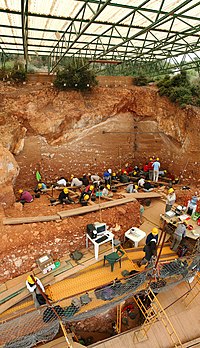
Photo from wikipedia
As a discipline that has grown up in the eyes of the camera, maritime and underwater archaeology has struggled historically to distinguish itself from early misrepresentations of it as adventure-seeking,… Click to show full abstract
As a discipline that has grown up in the eyes of the camera, maritime and underwater archaeology has struggled historically to distinguish itself from early misrepresentations of it as adventure-seeking, treasure hunting and underwater salvage as popularized in the 1950s and 1960s. Though many professional archaeologists have successfully moved forward from this history through broader theoretical engagement and the development of the discipline within anthropology, public perception of archaeology under water has not advanced in stride. Central to this issue is the portrayal of underwater archaeology within popular culture and the representational structures from the 1950s and 1960s persistently used to introduce the profession to the public, through the consumption of popular books and especially television. This article explores representations of maritime and underwater archaeology to examine how the discipline has been consumed by the public, both methodologically and theoretically, through media. In order to interrogate this, we first examine maritime and underwater archaeology as a combined sub-discipline of archaeology and consider how it has been defined historically and in contemporary professional practice. Finally, we consider how practitioners can take a proactive approach to portray their work and convey archaeological media to the public. In this respect, we aim to advance the theoretical discussion in a way so as to reduce further cases whereby archaeology is accidentally misappropriated or deliberately hijacked.
Journal Title: Journal of Maritime Archaeology
Year Published: 2018
Link to full text (if available)
Share on Social Media: Sign Up to like & get
recommendations!